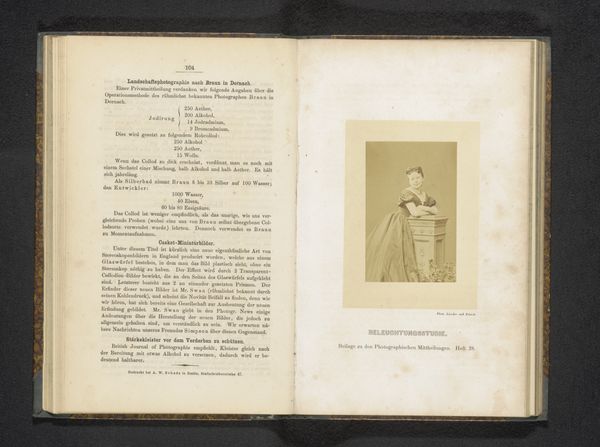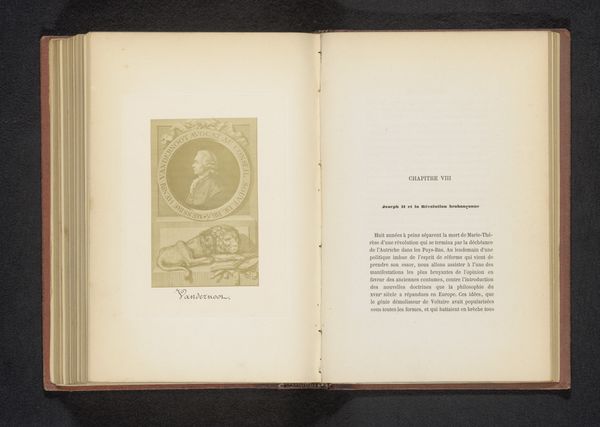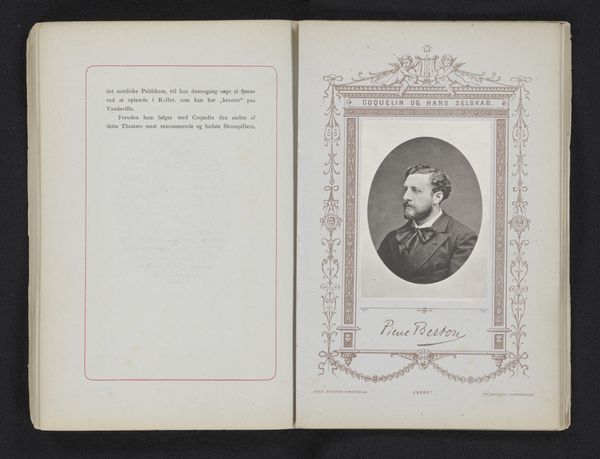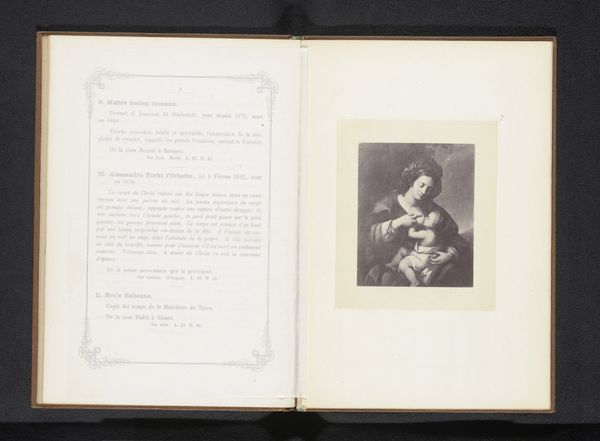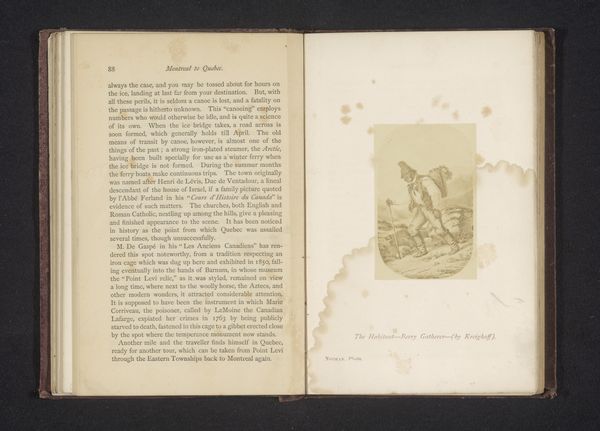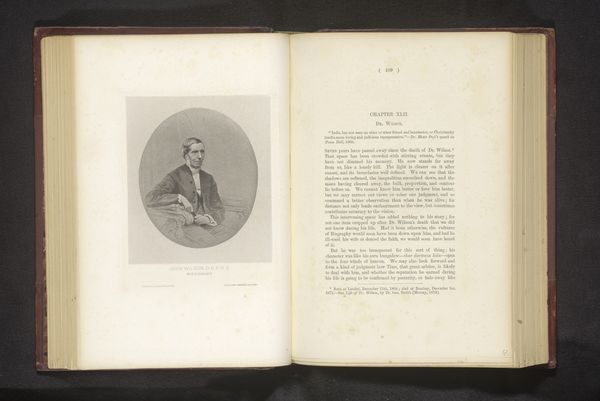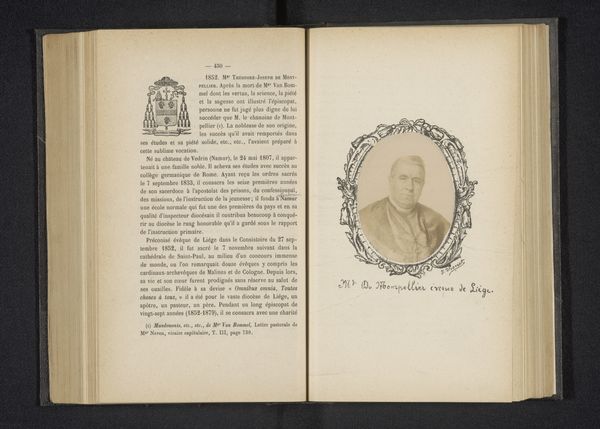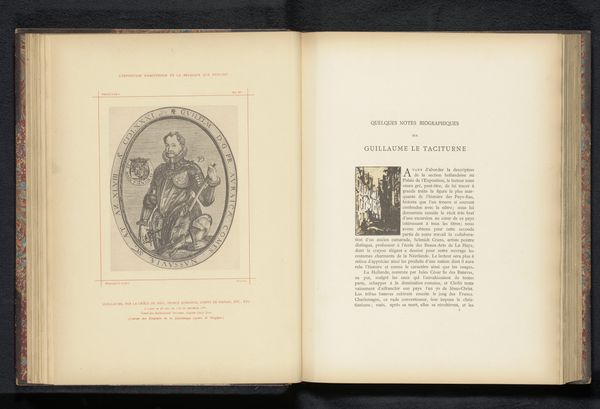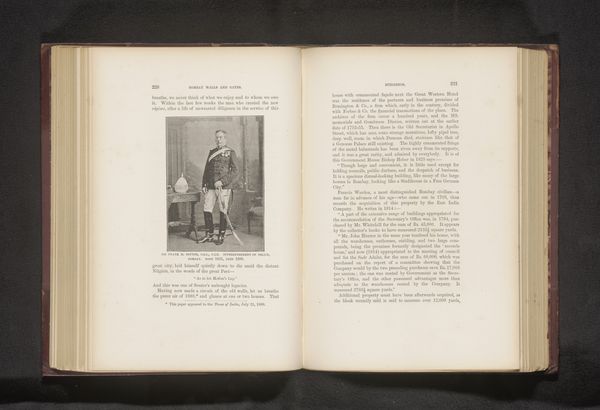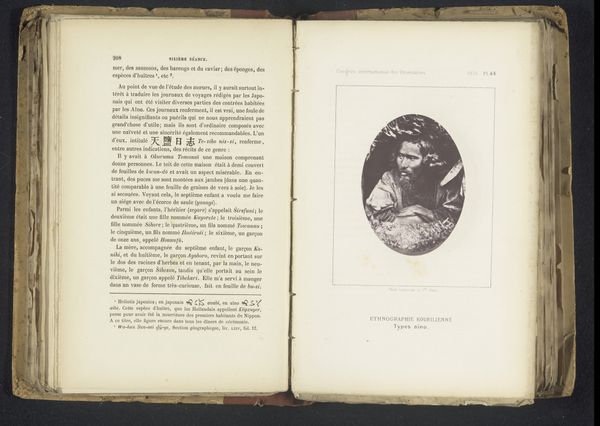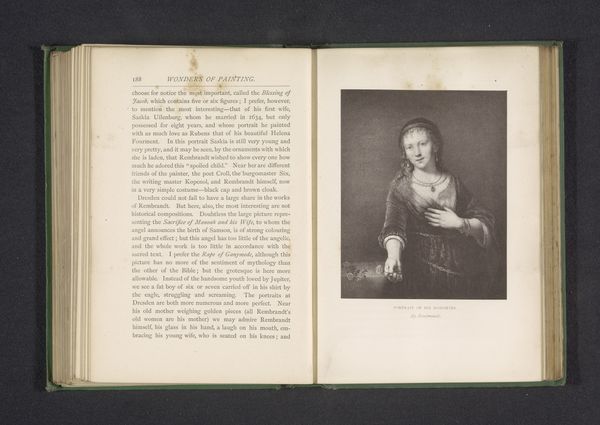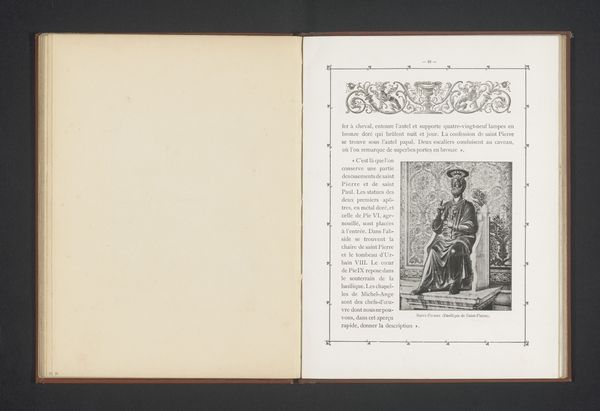
Fotoreproductie van een tekening, voorstellende een imaginair portret van de spirituele gids Tien-Sien-Tie before 1877
0:00
0:00
photography, albumen-print
#
portrait
#
photography
#
orientalism
#
islamic-art
#
albumen-print
Dimensions: height 82 mm, width 56 mm
Copyright: Rijks Museum: Open Domain
Editor: This is a reproduction of a drawing from before 1877, titled "Imaginary portrait of the spiritual guide Tien-Sien-Tie". It's presented as an albumen print photograph in a book. I find it quite striking, the way the portrait is staged, almost reverential, within the decorative border. What do you see in this piece? Curator: This image opens up a fascinating discussion around Orientalism and spiritualism in the 19th century. Notice how "Tien-Sien-Tie" is presented through a Western lens, exoticized perhaps, even fabricated. The book speaks of a "spirit-photographer," which reflects a broader fascination with communicating with spirits and the occult at the time. Consider how this intersects with the colonial gaze. Was "Tien-Sien-Tie" a real person, or a construct of Western spiritualist imagination? How might the portrayal of this figure reinforce or challenge existing power structures? Editor: So, the focus isn't necessarily on the accuracy of the portrait itself, but on what it reveals about the Western perception and manipulation of Eastern spirituality? Curator: Exactly. This piece can serve as a launchpad to explore the appropriation and reinterpretation of non-Western cultures within a spiritual context, particularly during a period marked by imperial expansion and cultural exchange – albeit unequal exchange. Also note that they called this image, “imaginary.” This act of naming asks us to think about authenticity and its simulacrum. It asks us to imagine identity beyond easy cultural binaries. Editor: I hadn't considered it that way. I was so focused on the figure, I missed the larger cultural context at play. Thank you! Curator: Absolutely. It is exciting to remember that even what may appear to be a benign, antiquated portrait can hold a mirror to complex historical dynamics of power and representation.
Comments
No comments
Be the first to comment and join the conversation on the ultimate creative platform.

